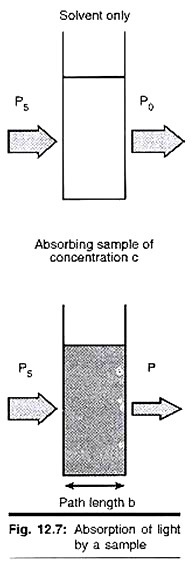In this article we will discuss about the details of structural genes.
Structural Genes:
They control amino acid sequence of a protein by producing mRNA. There are as many structural genes as there are proteins which are regulated. Either a single mRNA is transcribed from each structural gene or, all the structural genes of an operon form a single polycistronic mRNA.
The Operator:
It is the binding site for the repressor and controls the structural genes. Itself it is under the negative control of the repressor protein. The operator determines whether or not structural genes are to be repressed by the repressor produced by regulatory gene. If there is a mutation in the operator region rendering it functionless, the repressor is not able to bind and structural genes are transcribed. Mutants of the operator locus are called operator-constitutive mutants (Oc).
Gilbert and his colleagues isolated the operator region by breaking DNA of lac region into fragments 1,000 base pairs long. A property of the operator region is that when it is complexed to the repressor it is protected from digestion by DNAase. The operator region has double helical DNA about 27 base pairs long.
The Promoter:
It consists of a small segment of DNA, less than 100 nucleotides in length which lies between the regulatory gene and the operator gene. It has a binding site which is recognised by the enzyme DNA directed RNA polymerase and which gives the initiation signal for transcription of mRNA.
RNA polymerase moves along the operator locus and over to the structural genes which transcribe mRNA. Besides the lac operon, in other operons, the promoter region has a second binding site for a specific protein called the cyclic AMP receptor protein.
The Lac Operon:
The structural genes z, y and a, together with the operator o constitute the lactose operon. The operon provides a mechanism for the coordinate expression of structural genes (under the control of the operator and the regulator) resulting in the induction of enzymes due to a single inducer.
The operator locus controls the transcription of the entire group of coordinately induced genes so that a single large polycistronic messenger RNA is formed. The enzyme RNA polymerase binds to the promoter and all the genes in the operon are transcribed in a sequence. When repressor produced by the regulator is bound to the operator, transcription is not initiated and expression of all the genes in the operon is inhibited simultaneously.
Another feature of the operon is polarity. The genes z, y and a synthesise equal quantities of the three enzymes β-galactosidase, permease and acetylase and in the same order as their respective genes are located in DNA. Thus β-galactosidase (product of z gene) is synthesised first, followed by permease (y gene product), and last of all acetylase (produced by a gene).
This is the effect of polarity. If there is mutation in z gene, there is no transcription of all three structural genes. If the mutation is in the y gene, then both y and a genes are inhibited, whereas the z gene synthesizes β-galactosidase. These are called polar mutations.
Generally speaking we can say that an operon is a group of functionally related structural genes which can be turned on or off coordinately under the control of the same regulatory gene. The clustering of genes for various enzymes of a single metabolic pathway is probably necessary to facilitate operon function.
The Regulator Gene:
It determines whether structural genes will be transcribed or not. It codes for the amino acid sequence of a specific repressor protein. The repressor molecule diffuses from the ribosomes where it is formed and becomes bound to the operator. Due to the diffusible nature of its product repressor, the regulator gene does not always lie adjacent to the structural genes it regulates.
When the regulator gene undergoes mutation, it can no longer inhibit the transcription of the structural genes. The genes z, y and a then synthesise the three enzymes whether the inducer is present or not. For a long time the chemical nature of the repressor molecules postulated by Jacob and Monod could not be identified.
In 1967, W. Gilbert and Muller-Hill succeeded in isolating the lac repressor. They produced mutant E. coli cells which contained almost ten times the amount of lac repressor present in normal cells. The repressor protein has now been crystallized. It has a molecular weight of about 150,000 with a high affinity for its specific locus in E. coli. Besides the lac repressor, the galactose and tryptophan repressor have also been isolated in a pure form.
The lac repressor is a tetramer consisting of four units of a protein coded by the regulator gene, each of molecular weight about 37000. An E. coli cell contains about 10 such repressor molecules. There are almost 347 amino acid residues in a repressor. About 50 amino acids in the lac repressor bind to a sequence of about 12 base pairs in the operator region. This binding of the repressor prevents transcription of mRNA by RNA polymerase.
When lactose is present in the medium its uptake into the E. coli cell is followed by trans- glycosylation, a slight molecular rearrangement to form allolactose (Fig. 16.2). The synthesis of allolactose is catalysed by the few β-galactosidase molecules that are present prior to induction. Allolactose binds to the lac repressor to form an inducer-repressor complex.
When the inducer becomes bound to the repressor, the binding of the repressor to the operator region is released due to a change in the 3-dimensional conformation of the repressor protein called allosteric effect. The unbound operator then permits RNA polymerase to transcribe. In this case allolactose is the effector molecule which prevents the regulatory protein from binding to the operator.
